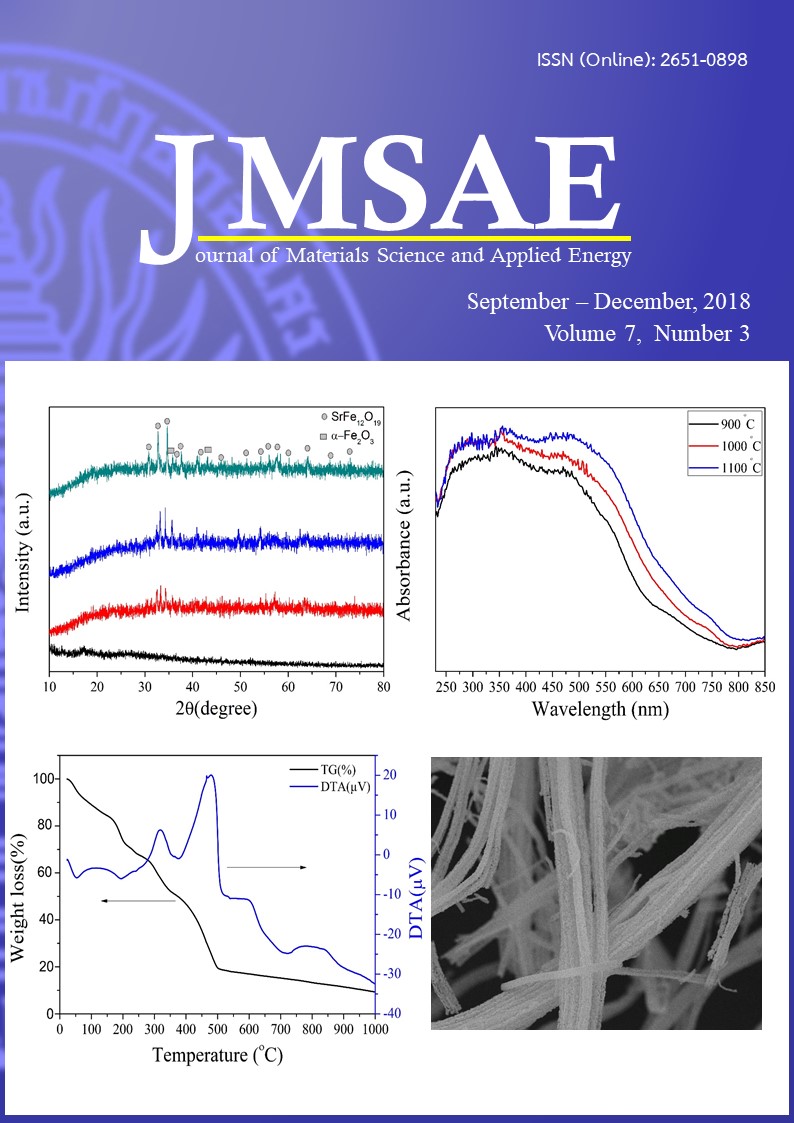Catalytic Pyrolysis of Water Hyacinth with Rice Husk-derived Silica Modified by Vanadium
Keywords:
Catalytic pyrolysis, bio-oil, modified silicaAbstract
Water hyacinth, one of the world's worst aquatic weeds, was pyrolyzed here in a 0.5 L tubular reactor to convert it into the valuable products including bio-oil, bio-char and fuel gas. Considering on the bio-oil product, it was found that the bio-oil yield of the pyrolysis was relatively low (12.5 %wt). Therefore, the catalytic pyrolysis with vanadium-modified silica (commercial, CMV) was introduced in the study to overcome that problem. This resulted in increase of the bio-oil yield almost 2 times (24.0 %wt). In addition, in order to reduce processing cost and gain benefit from agricultural residue, silica extracted from rice husk was also used as a catalyst in the pyrolysis, compared with the commercial one. It was observed that the catalytic pyrolysis with rice husk-derived silica (modified with vanadium, RHV) gave a higher bio-oil yield than the non-catalytic pyrolysis at 400 °C, but slightly lower at 600 °C. When comparing between two catalysts, it was found that RHV gave lower bio-oil yield than CMS at all pyrolysis temperatures. The bio-char obtained from the pyrolysis without further modification was applied for benzene adsorption, and exhibited a high adsorption capability. This would add value to the pyrolysis products from water hyacinth, and evidently shows the efficient utilization of this weed.








